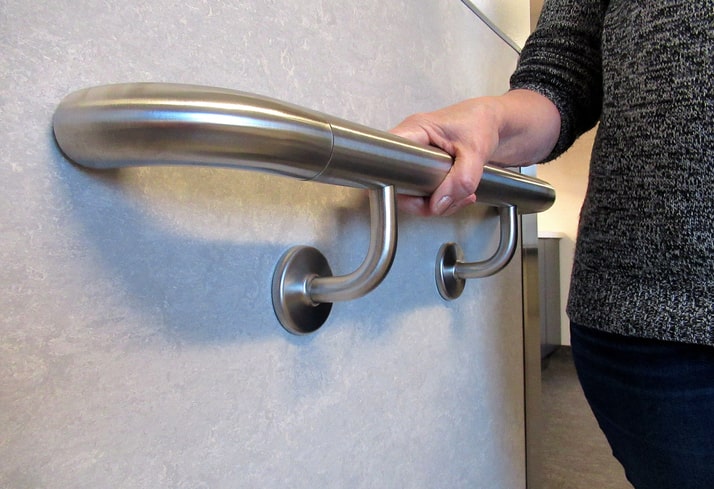Ensuring bathroom safety for hearing-impaired seniors is not just about installing the right equipment; it involves creating an environment where they can feel secure and independent. Given the unique challenges faced by seniors with hearing impairments, it is crucial to tailor safety measures to their specific needs. This guide will explore various strategies to enhance their safety and comfort.

Importance of Bathroom Safety
The bathroom is often considered one of the most hazardous areas in a home, especially for seniors. Slippery surfaces, sharp corners, and the need for independence can create a risky environment. For those with hearing impairments, the risks are amplified due to potential communication barriers and reduced alertness to auditory cues. Therefore, focusing on bathroom safety becomes essential.
Challenges Faced by Hearing-Impaired Seniors
Hearing-impaired seniors face unique challenges in maintaining bathroom safety. They may not hear warning sounds like running water or a family member calling. This can lead to accidents, such as slips and falls, which are more frequent in bathrooms. Thus, addressing these challenges with appropriate safety measures is vital.
Communication Barriers
One significant challenge is the communication barrier. Seniors who are hard of hearing might struggle to communicate their needs or alert someone in case of an emergency. This can be mitigated by using visual aids or assistive technologies designed for the hearing impaired.
Essential Bathroom Safety Features
Implementing essential safety features in the bathroom can significantly reduce the risk of accidents. Here are some suggestions:
Grab Bars and Handrails
Installing grab bars and handrails provides support for seniors, helping them keep balance and prevent falls. These should be placed near the toilet and in the shower area. For more detailed installation guidelines, visit safety equipment installation.
Non-Slip Mats
Non-slip mats are another crucial feature to ensure bathroom safety. They minimize the risk of slipping on wet surfaces, especially in the shower or bathtub.
Proper Lighting
Good lighting is essential for visibility. Motion-activated lights or night lights can help seniors navigate the bathroom more safely. This is particularly important for those with hearing impairments who may rely more on visual cues. Learn more about better lighting for fall prevention.
Advanced Technologies for Safety
Technology can play a significant role in enhancing bathroom safety for hearing-impaired seniors. Here are some technologies that can be utilized:
Visual Alert Systems
Visual alert systems can notify seniors of potential hazards, such as water left running or someone at the door. These systems use flashing lights to alert the individual, ensuring they don’t miss important cues.
Emergency Call Buttons
Installing emergency call buttons within easy reach in the bathroom can provide an extra layer of security. These buttons can alert caregivers or family members in case of an emergency.
Creating a Safe Bathroom Environment
Creating a safe bathroom environment involves more than just equipment. It requires a holistic approach that considers the individual’s needs and preferences. Consulting with professionals can provide insights into effective strategies for improving safety.
Customized Solutions
Each individual’s needs may vary, so customizing solutions is crucial. This might involve installing additional safety features or adjusting existing ones to better suit the senior’s requirements.
Role of Caregivers in Ensuring Safety
Caregivers play an essential role in maintaining bathroom safety. They can help by regularly checking safety equipment, assisting with personal care, and providing emotional support. For tips on how caregivers can assist, visit caregiver tips.
Maintaining Independence While Ensuring Safety
Maintaining a balance between independence and safety is crucial for the well-being of hearing-impaired seniors. Encourage them to participate in safety planning and decision-making to ensure they feel in control of their environment.
Regular Safety Assessments
Conducting regular safety assessments can help identify potential hazards and ensure that all safety measures are functioning correctly. This proactive approach can prevent accidents before they occur.
Community Support and Resources
Various community resources and support groups can provide additional assistance and information on bathroom safety. These can be invaluable for both seniors and their caregivers.
Online Resources
Online resources can offer a wealth of information on safety tips and products specifically designed for seniors. Websites like Loving Home Care provide comprehensive guides and resources.
Conclusion
Ensuring bathroom safety for hearing-impaired seniors requires a combination of the right equipment, technology, and support. By understanding their unique needs and providing tailored solutions, we can create safer environments that promote their independence and well-being.

FAQ Section
What are the key safety features for hearing-impaired seniors?
Key features include grab bars, non-slip mats, proper lighting, visual alert systems, and emergency call buttons.
How can caregivers assist in bathroom safety?
Caregivers can assist by checking equipment, providing personal care support, and helping with safety assessments.
Are there technologies available to help with bathroom safety?
Yes, technologies such as visual alert systems and emergency call buttons can enhance safety for hearing-impaired seniors.
This article contains affiliate links. We may earn a commission at no extra cost to you.

